10 Warning Signs Your Home Needs Electrical Repairs Immediately
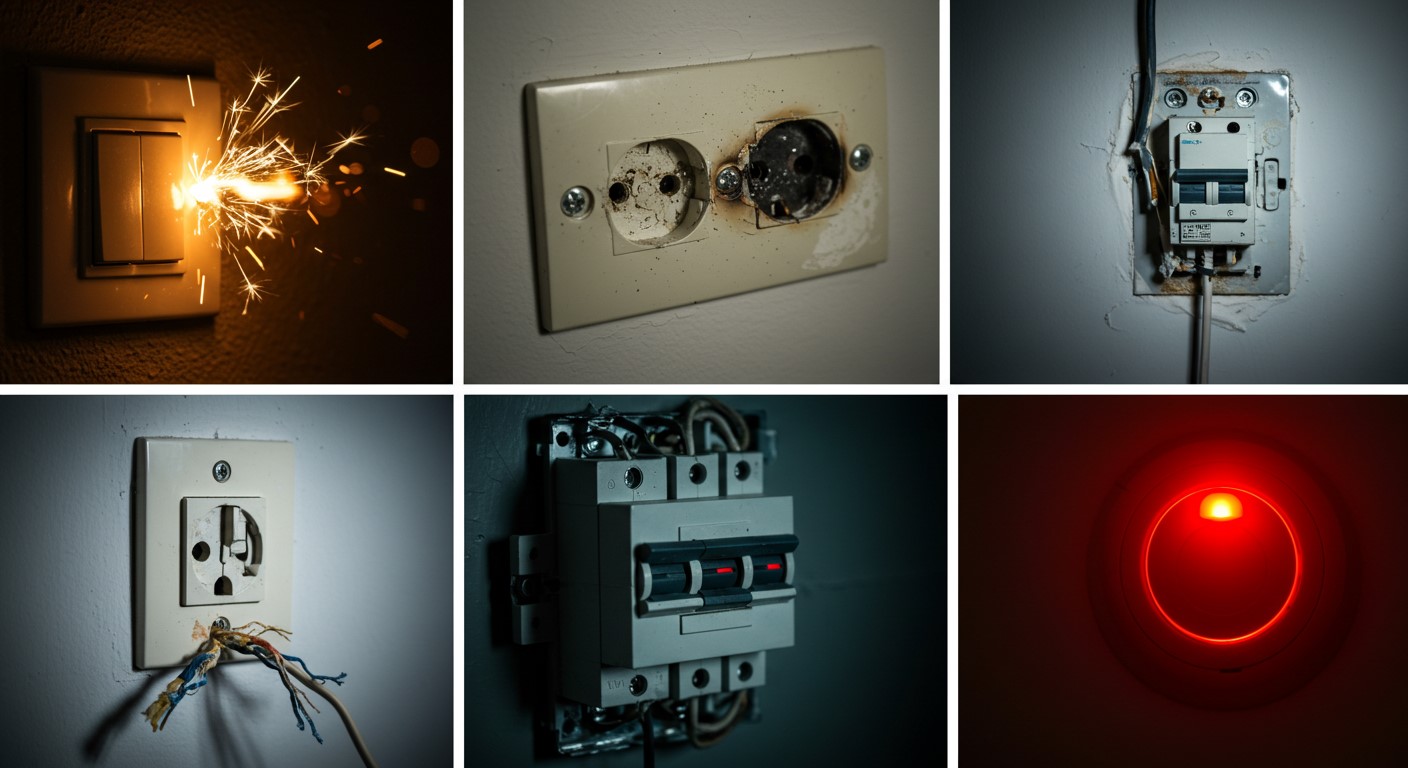
Introduction: Why Electrical Safety Can't Wait
Your home's electrical system is a silent workhorse—until it becomes a silent killer. Consider these urgent statistics:
- The National Fire Protection Association (NFPA) reports 51,000 electrical fires annually in U.S. homes, resulting in 1,400 injuries, 500 deaths, and $1.3 billion in property damage.
- California-specific risks: 60% of homes built before 1974 have outdated wiring (like aluminum or knob-and-tube), which are 55% more likely to cause fires.
- Hidden dangers: Electrical fires often start in walls, attics, or behind appliances, where warnings like burning smells go unnoticed until it's too late.
This guide will cover:
- ✅ How to distinguish between minor annoyances and urgent hazards
- ✅ DIY safety checks you can perform right now (with clear warnings)
- ✅ When California law requires a licensed electrician (vs. when a handyman suffices)
- ✅ Real-life case studies of electrical failures and their consequences

Sign #1: Flickering or Dimming Lights
What's Happening?
Flickering lights are never normal. Here's what's likely occurring:
A. Overloaded Circuit
- Scenario: Lights dim when you turn on the microwave/vacuum.
- Why? The circuit is drawing more power than it can handle.
- Test: Plug the appliance into a different circuit. If flickering stops, the circuit is overloaded.
B. Loose Wiring
- Danger: Loose connections cause arcing—sparks that reach 10,000°F and ignite nearby materials.
- Check: Turn off power, remove the light fixture, and inspect wires for frays (if comfortable).
C. Utility Issue
If neighbors also report flickering, contact your power company immediately.
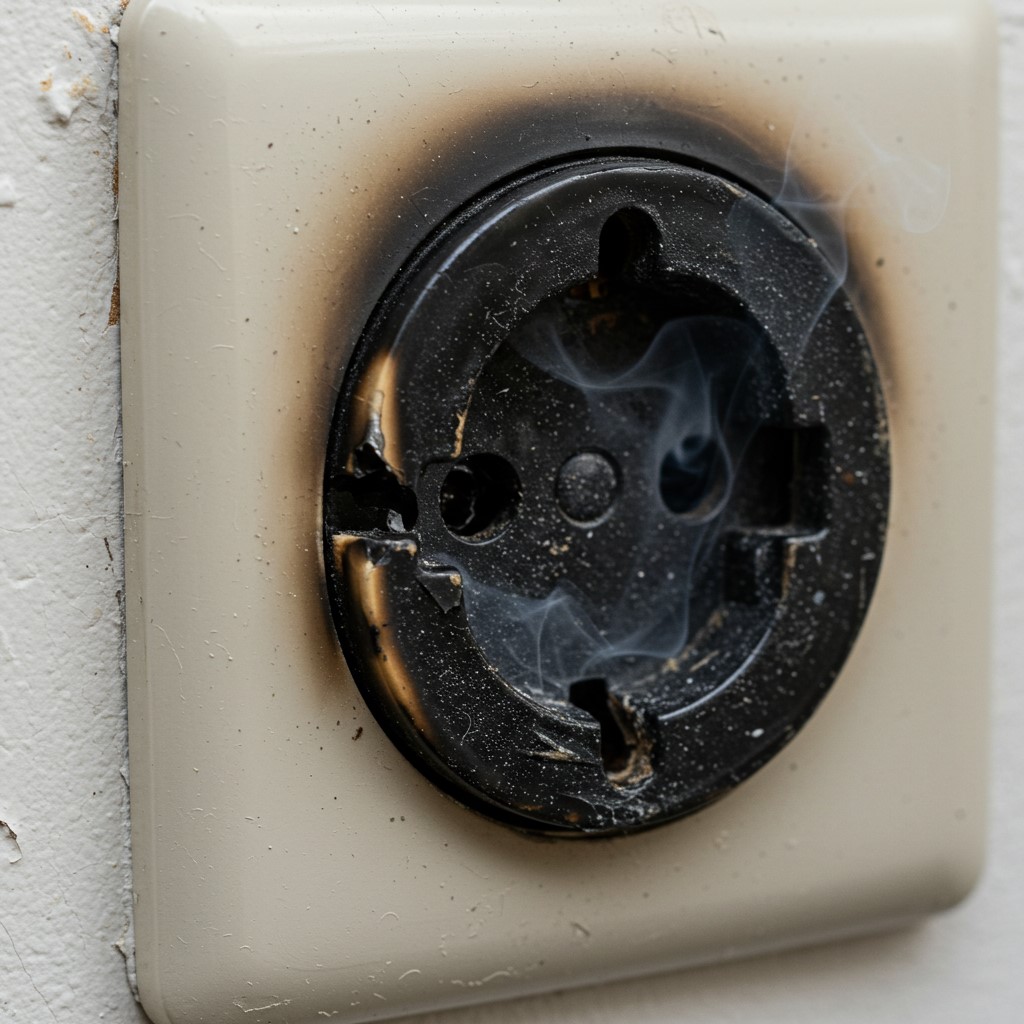
Sign #2: Burning Smell or Scorch Marks
Life-Saving Detection Guide
A. Identify the Smell
| Smell | Likely Cause | Immediate Action |
|---|---|---|
| Burning plastic | Melting wire insulation | Turn off power, call electrician |
| Fishy odor (no fish nearby) | Overheated plastic components | Unplug devices, inspect outlets |
| Sulfur (rotten eggs) | Electrical arcing behind walls | Evacuate, call 911 |
B. Inspect for Scorch Marks
Outlets/Switches: Remove covers (power off!) to check for:
- Black/brown discoloration
- Melted plastic around prongs
Breaker Panel: Look for rusted or discolored breakers—signs of overheating.
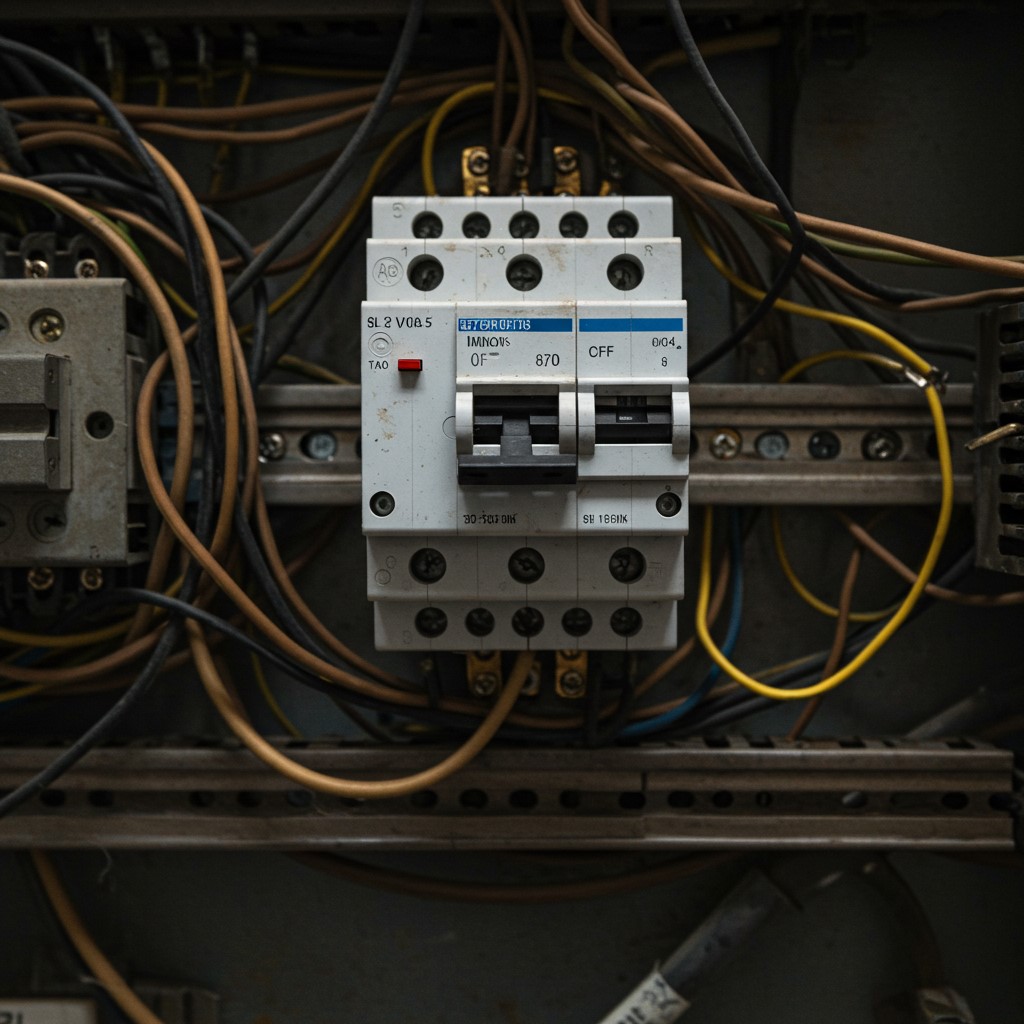
Sign #3: Frequently Tripping Circuit Breakers
Diagnosis Flowchart
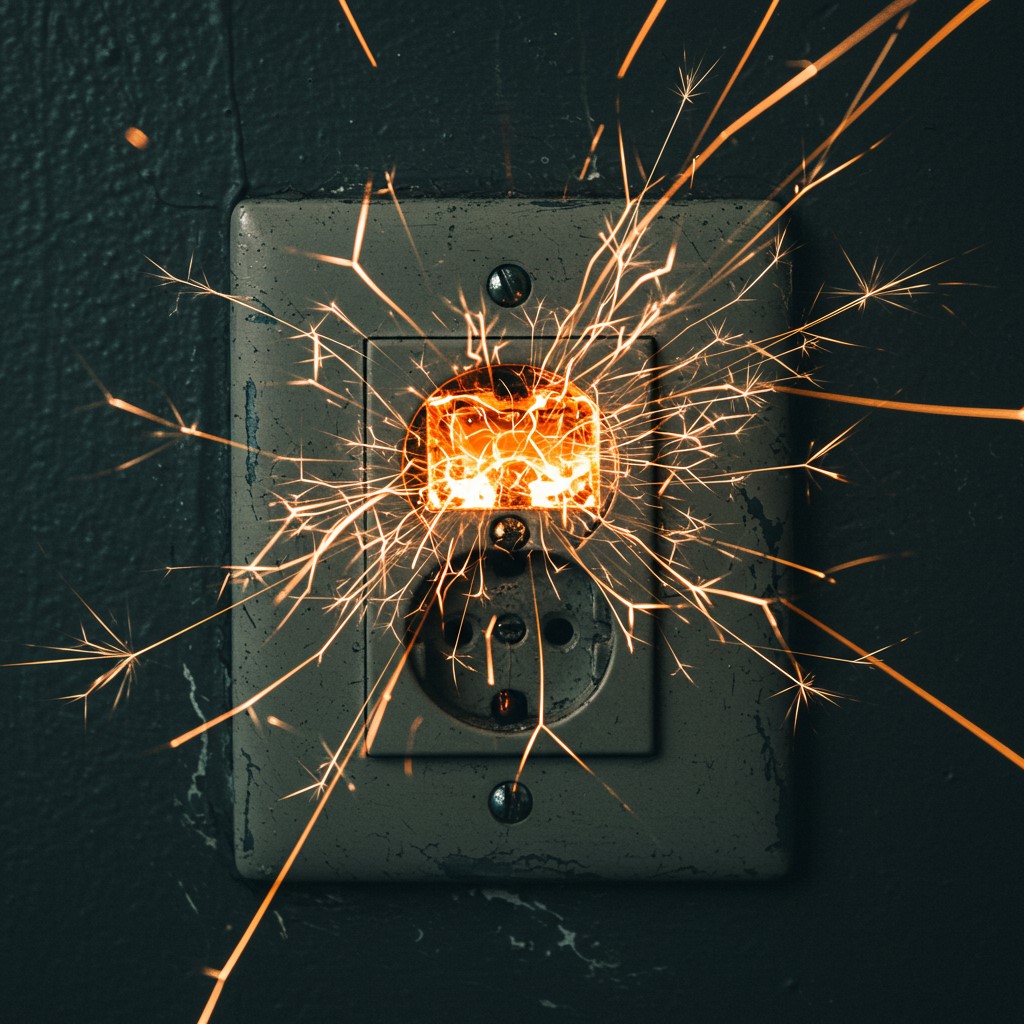
Sign #4: Buzzing or Crackling from Outlets
Why It's a "Silent Killer"
- Loose Wiring: Vibrations from current flow create buzzing (like a bee in your wall).
- Arcing: Sparks jump gaps in damaged wires, reaching temps hotter than the sun's surface.
DIY Safety Check (Power Off!):
- Unscrew the outlet cover.
- Check for:
- Charred wires (blackened copper)
- Loose terminal screws
If found, stop—call a licensed pro immediately.
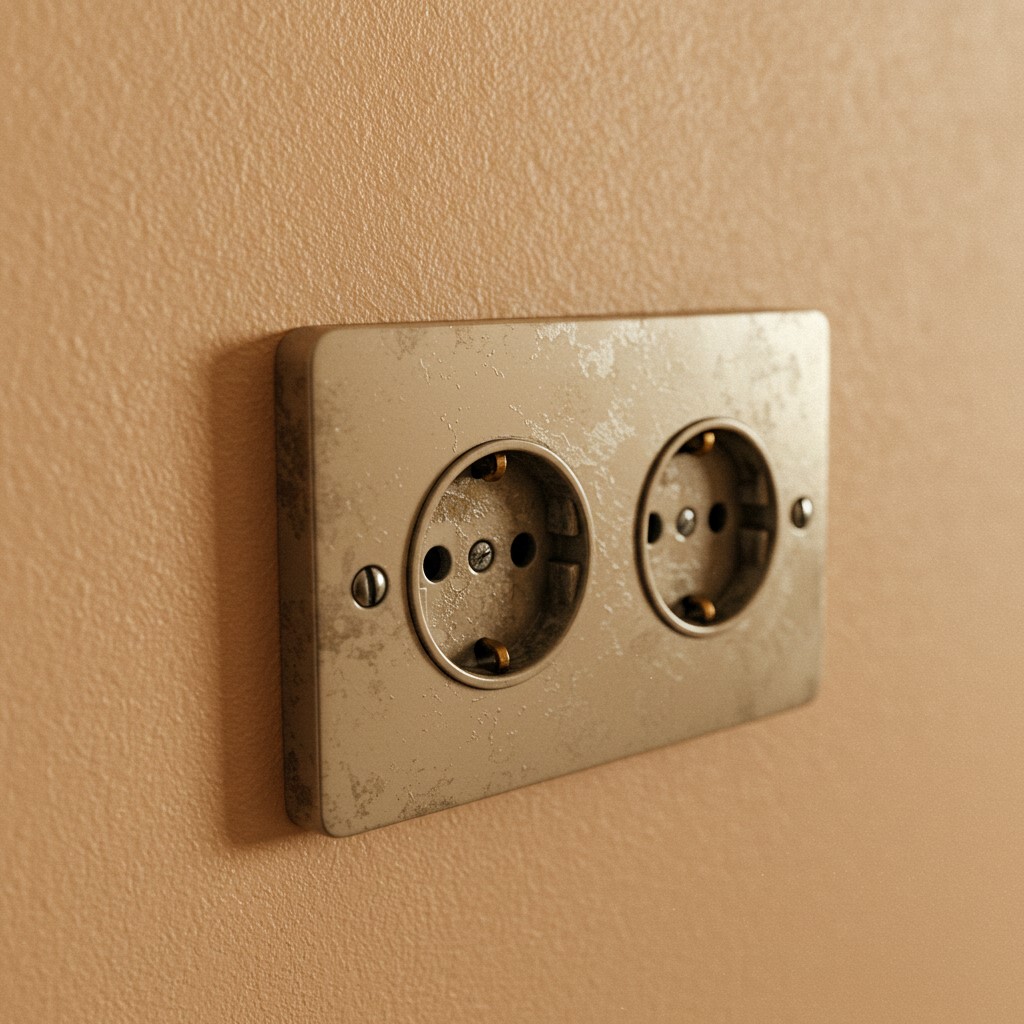
Sign #5: Warm or Discolored Wall Plates
How Hot Is Too Hot?
- Safe: Slightly warm under heavy use (e.g., space heater running).
- Dangerous: Too hot to touch (>120°F) or discolored (yellow/brown).
Common Culprits:
- Backstabbed Wires: Cheap builders push wires into outlet backs instead of screwing them—80% failure rate within 10 years.
- Oversized Bulbs: A 100W bulb in a 60W fixture overheats the socket.
Fix:
- Replace outlets with screw-terminal models ($2–5 each).
- Install LED bulbs (cooler, energy-efficient).
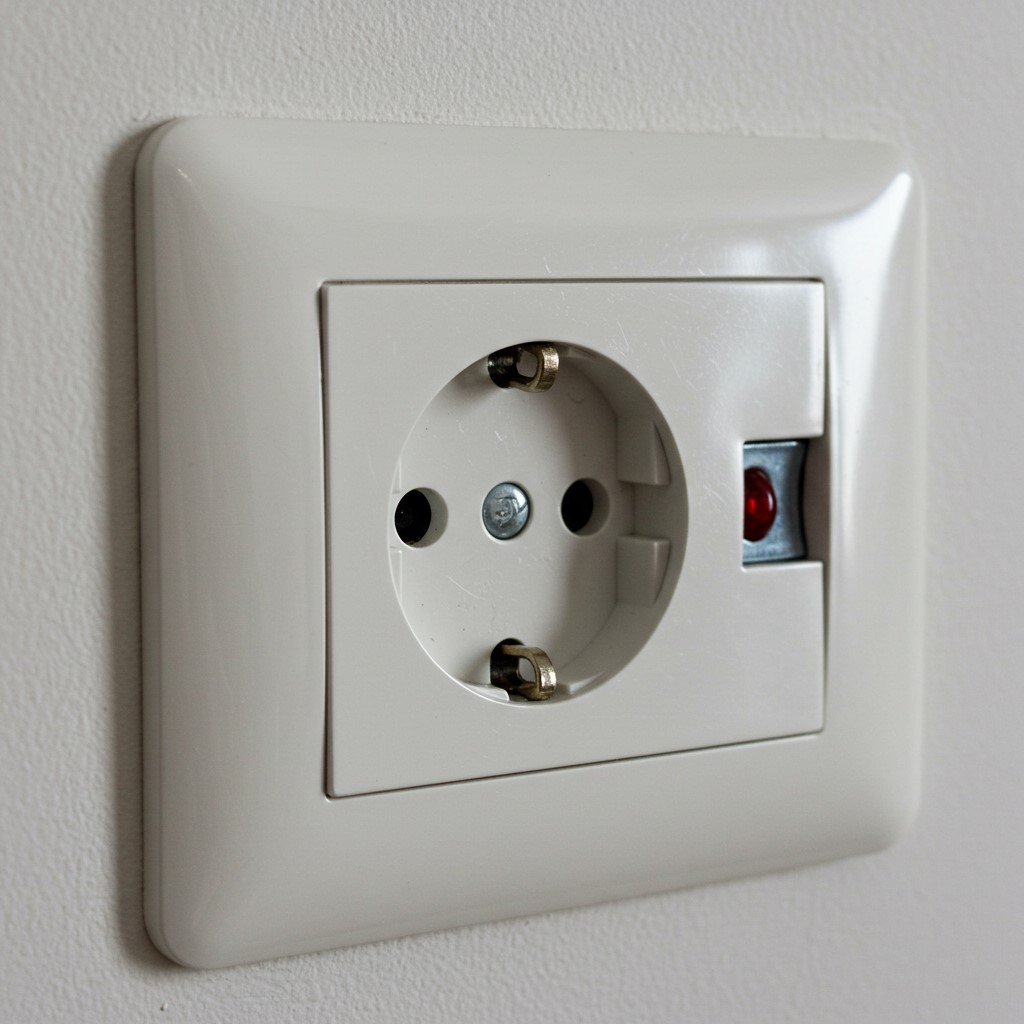
Sign #6: Dead Outlets
🔌 Possible Causes:
- Tripped GFCI outlet (check nearby bathrooms/kitchen).
- Loose wiring or a failing circuit.
💡 Solution:
If resetting the GFCI doesn't work, call an electrician.
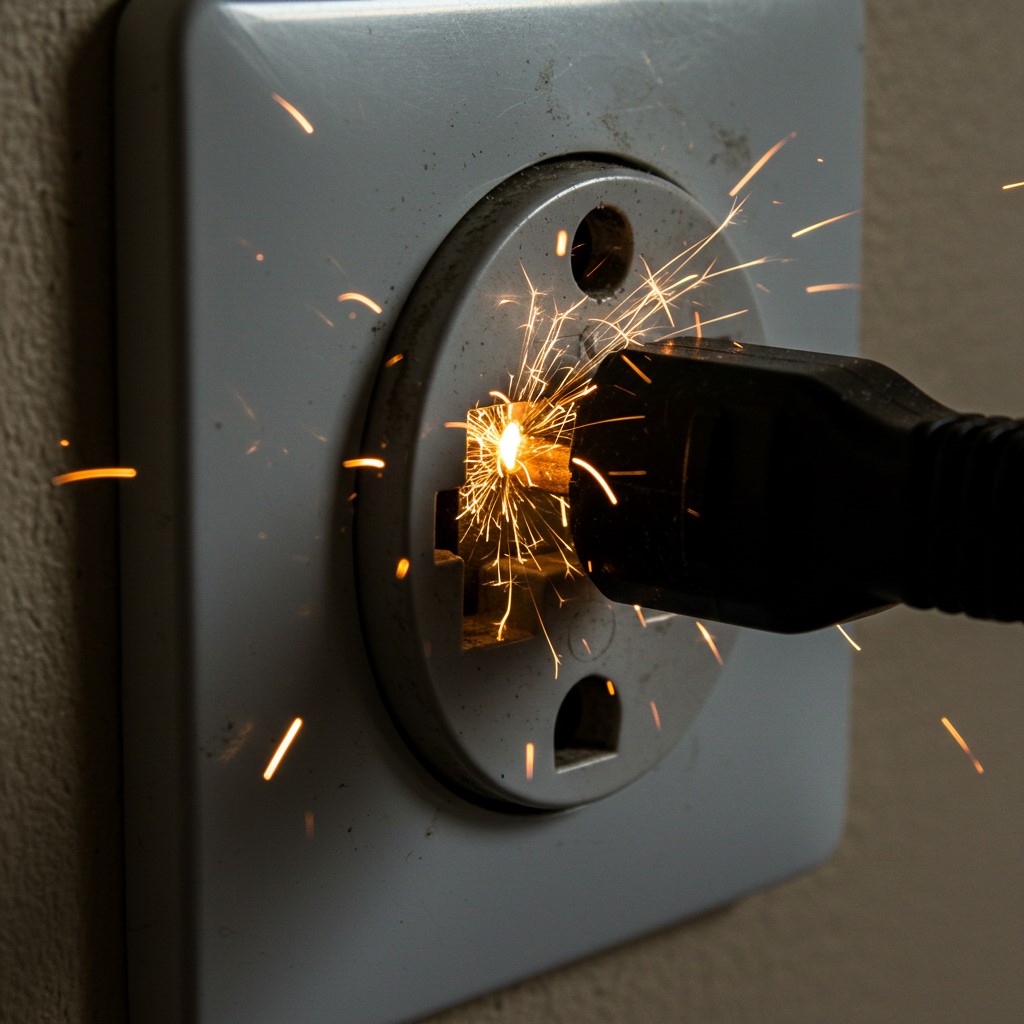
Sign #7: Sparks When Plugging In Devices
⚡ Small Spark? Normal.
🔥 Big/Consistent Sparks? Dangerous.
Causes:
- Worn-out outlets
- Short circuits
- Frayed wiring
🚫 Don't Risk It—replace faulty outlets.
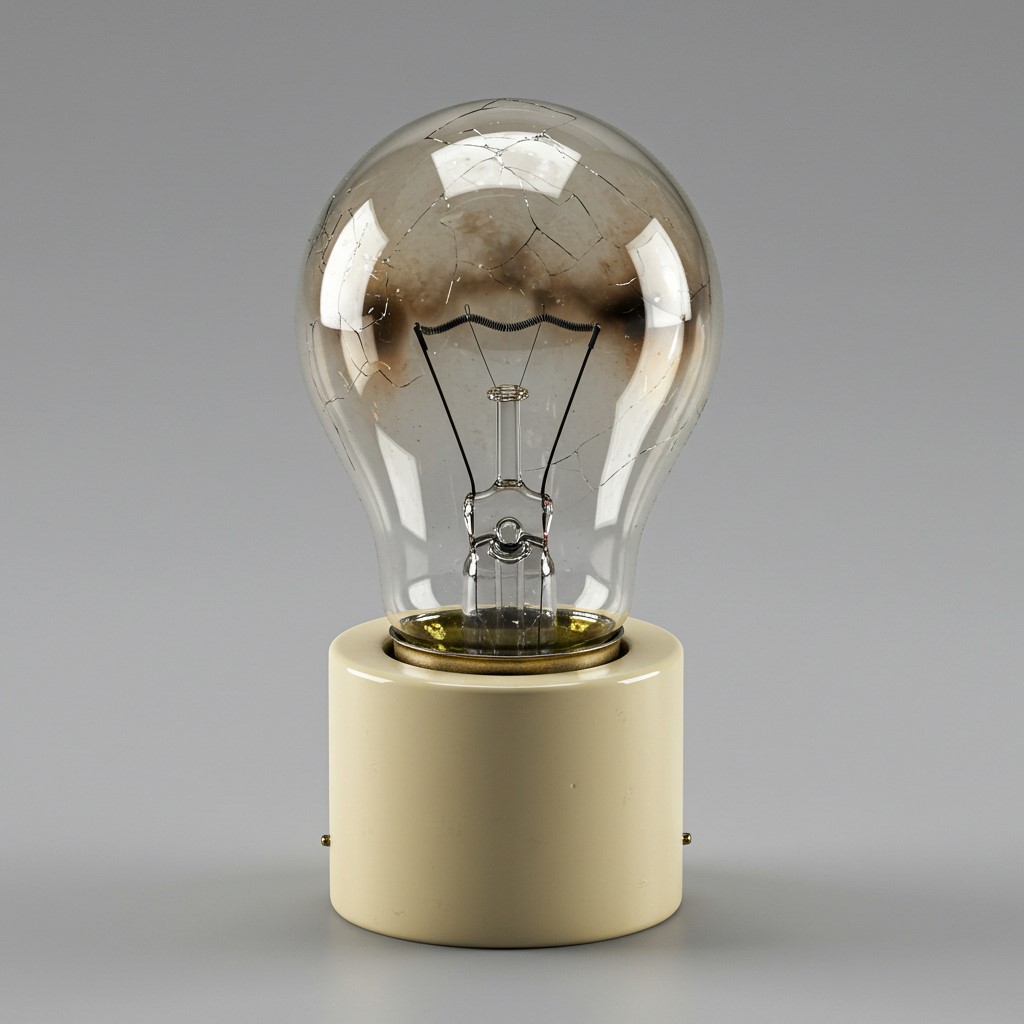
Sign #8: Light Bulbs Burning Out Too Fast
💡 Why It Happens:
- Poor wiring connections
- Excessive voltage
- Wrong bulb wattage
Fix:
- Check bulb compatibility.
- If the issue persists, inspect the circuit.
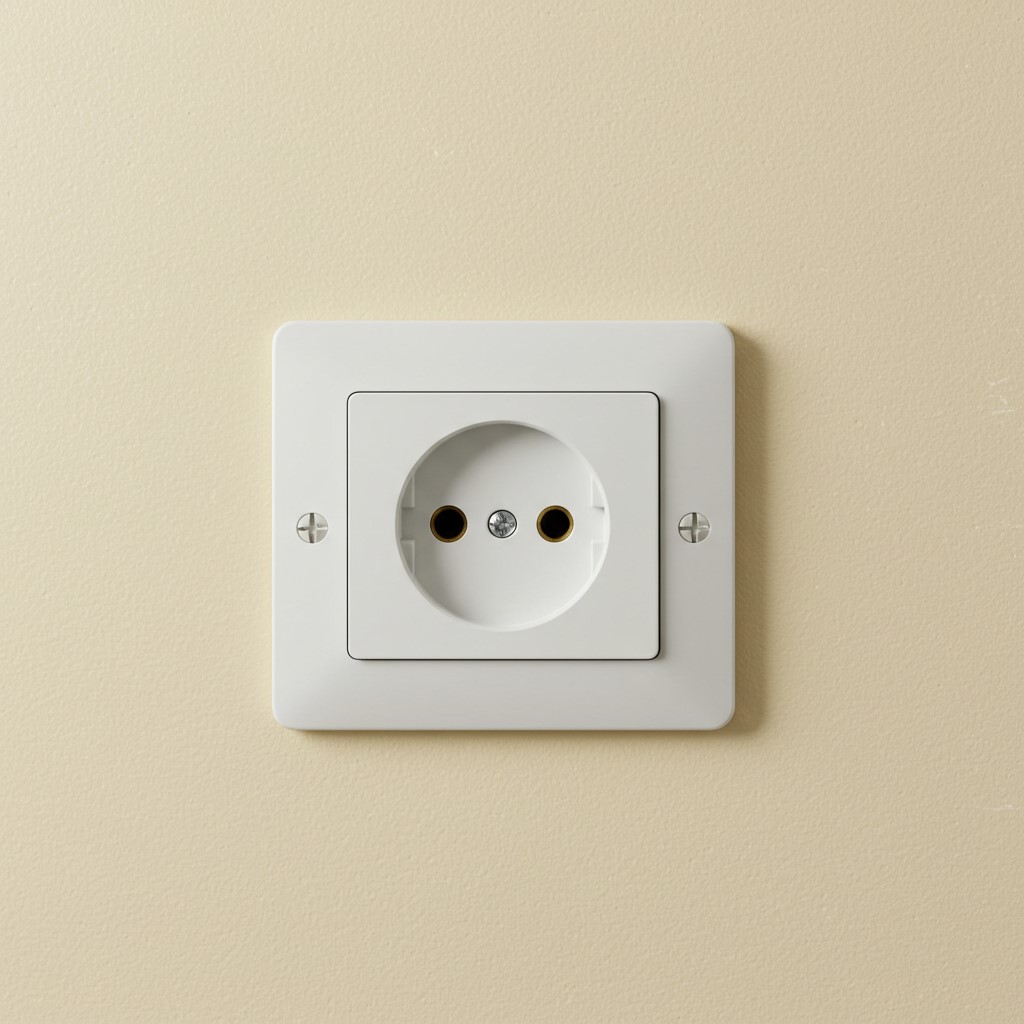
Sign #9: Two-Prong Outlets (Ungrounded)
⚠️ Outdated & Unsafe:
- No third prong = no ground wire, increasing shock risk.
- Modern electronics need 3-prong grounded outlets.
🛠️ Upgrade Now:
A licensed electrician can rewire them for safety.

Sign #10: Electric Shocks from Appliances/Switches
⚡ Even a Tiny Shock Is a Red Flag!
Possible causes:
- Faulty appliance
- Improper grounding
- Damaged wiring
🆘 Get Help:
This is a serious hazard—don't ignore it.
Why Electrical Problems Are Serious
The 4 Hidden Costs of Neglect
- Fire Risk - 12% of home fires start from electrical failures (NFPA).
- Insurance Nightmares - Unpermitted work = denied claims (e.g., San Diego case: $75K fire damage denied due to DIY wiring).
- Legal Liability - California fines up to $5,000/day for unlicensed work.
- Resale Value Loss - Homes with outdated wiring sell for 10–15% less (Redfin 2023 data).
When to Call a Pro: Handyman vs. Electrician
California Law Cheat Sheet
| Job | Handyman Allowed? | Licensed Electrician Required? |
|---|---|---|
| Replace light switch | ✅ Yes | ❌ No |
| Install new outlet | ❌ No (if new wiring) | ✅ Yes |
| Panel upgrade | ❌ No | ✅ Yes + Permit |
How TaskRight Handyman Can Help
Our 3-Step Safety Process
- Thermal Imaging Scan ($99): Finds hidden hotspots in walls.
- Code-Compliant Repairs: We use:
- 12-gauge wire for 20-amp circuits (required in kitchens).
- Tamper-resistant outlets (California Code 2023).
- Prevention Plan: Personalized tips (e.g., "Your 1972 home needs AFCI breakers").
Why Us?
- ✅ Licensed & insured for California
- ✅ Free estimates with price-matching
- ✅ 24/7 emergency service
Final Thoughts
Remember:
- 65% of electrical fires occur in homes built before 1980.
- Upgrading wiring offers 300% ROI in safety + home value.
FAQs: Electrical Repairs & Safety
General Electrical Concerns
No. Even small sparks indicate:
- Loose wiring (fire hazard)
- Short circuits (can damage appliances)
- Worn-out outlets (need replacement)
➡️ Action: Stop using it and call an electrician.
Your circuit is overloaded. This is common in older homes with:
- Undersized wiring (e.g., 14-gauge wire on a 20-amp circuit)
- Shared circuits (fridge, AC, and lights on one breaker)
➡️ Fix: Install a dedicated circuit for high-power appliances (~$300–$800).
Breakers trip to prevent damage. But if it trips repeatedly:
- Overheating can weaken the breaker
- Appliances may suffer power surges
➡️ Rule: If it trips >2x/month, get it inspected.
Outlet & Wiring Issues
No, but they're unsafe because:
- No ground wire → shock/fire risk
- Can't protect modern electronics (laptops, TVs)
➡️ Upgrade cost: $150–$300 per outlet (includes grounding).
You likely have:
- Backstabbed wires (loose connections)
- A hidden short circuit behind the wall
➡️ Urgency: High—shut off power and call a pro.
Yes, if:
- You turn off power at the breaker
- You match the line/load wires correctly
⚠️ California note: Permits may be required—check local codes.
Lighting Problems
Common causes:
- Incompatible dimmer switches (use "LED-rated" dimmers)
- Loose bulb sockets (tighten or replace the fixture)
- Voltage fluctuations (call your utility company)
Depends:
- Humming: Usually a cheap transformer (replace for ~$20)
- Loud buzzing: Loose wiring → fire risk
Circuit Breakers & Panels
Warning signs:
- Fuses (not breakers)
- Rust or corrosion
- No "AFCI/GFCI" labels
➡️ Upgrade cost: $1,500–$3,500 for a 200-amp panel.
Illegal in California without an electrician's license. Risks:
- Voided home insurance
- $5,000+ fines for unpermitted work
Shocks & Safety
Likely a grounding issue:
- Faulty appliance (test on another outlet)
- Ungrounded wiring (common in homes built before 1965)
➡️ Danger: Even mild shocks can indicate lethal faults.
No! Both can overheat if:
- Overloaded (check wattage ratings)
- Daisy-chained (never plug a strip into another strip)
✅ Safer alternative: Install more outlets ($100–$250 each).
California-Specific Questions
Yes, in:
- Bedrooms
- Living rooms
- Hallways
(Per 2023 California Electrical Code).
No. California law requires a licensed electrician for:
- New wiring
- Panel upgrades
- Any work needing a permit
Costs & Hiring Pros
Typical rates:
- $75–$150/hour (licensed electricians)
- $40–$80/hour (handyman for minor fixes)
⚠️ Avoid unlicensed workers—you'll pay double to fix their mistakes.
Always verify:
- "Are you licensed and insured?" (Check license # here)
- "Will you pull permits?" (Required for most work)
- "Do you offer warranties?" (Look for 1+ year labor warranties)
DIY Limits
Only minor repairs:
- Replacing switches/outlets (like-for-like)
- Changing light fixtures
- Resetting GFCI outlets
❌ Never DIY: New circuits, panel work, or rewiring.
Safely inspect for:
- Frayed wires (turn off power first!)
- Discolored outlets
- Frequent breaker trips
➡️ If found, call a pro immediately.
TaskRight Handyman Services
Yes! 24/7 services for:
- No power (tripped main breaker)
- Burning smells
- Sparkng outlets
☎️ Call: Contact our emergency team
100%. All repairs include:
- 2-year labor warranty
- Free follow-up inspections
- Compliance with California codes
Need help now? Contact us for a free electrical safety inspection
Zohaib M.

Decoding the Home Repair Dilemma: DIY Mastery vs. Calling the California Handyman Experts
Decoding the Home Repair Dilemma: DIY Mastery vs. Calling the California Handyman Experts | TaskRight Handyman Need a Handyman? Get a Free Quote! Decoding the
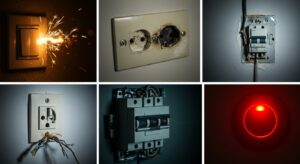
10 Warning Signs Your Home Needs Electrical Repairs Immediately
10 Warning Signs Your Home Needs Electrical Repairs Immediately | TaskRight Handyman 10 Warning Signs Your Home Needs Electrical Repairs Immediately Introduction: Why Electrical Safety
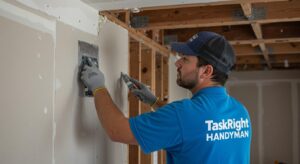
Drywall Repair 101: How to Patch Holes, Cracks, and Dents Like a Pro
Drywall Repair 101: How to Patch Holes, Cracks, and Dents Like a Pro Drywall Repair 101: How to Patch Holes, Cracks, and Dents Like a

The Ultimate Home Maintenance Checklist – Seasonal Tasks Every Homeowner Should Know
Ultimate Home Maintenance Checklist The Ultimate Home Maintenance Checklist – Seasonal Tasks Every Homeowner Should Know Introduction Taking care of your home throughout the year

Handyman Price List 2025: How Much Does a Handyman Cost?
2025 Handyman Price Guide: California Service Costs & Estimates | TaskRight Handyman 2025 Handyman Price Guide: How Much Do Home Repairs Cost in California? Planning
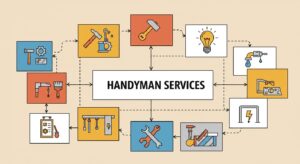
The Ultimate Handyman Services List: 25+ Essential Home Repairs & Upgrades
The Ultimate Handyman Services List: 25+ Essential Home Repairs & Upgrades What Does a Handyman Do? Handymen handle a variety of home repairs, maintenance, and
